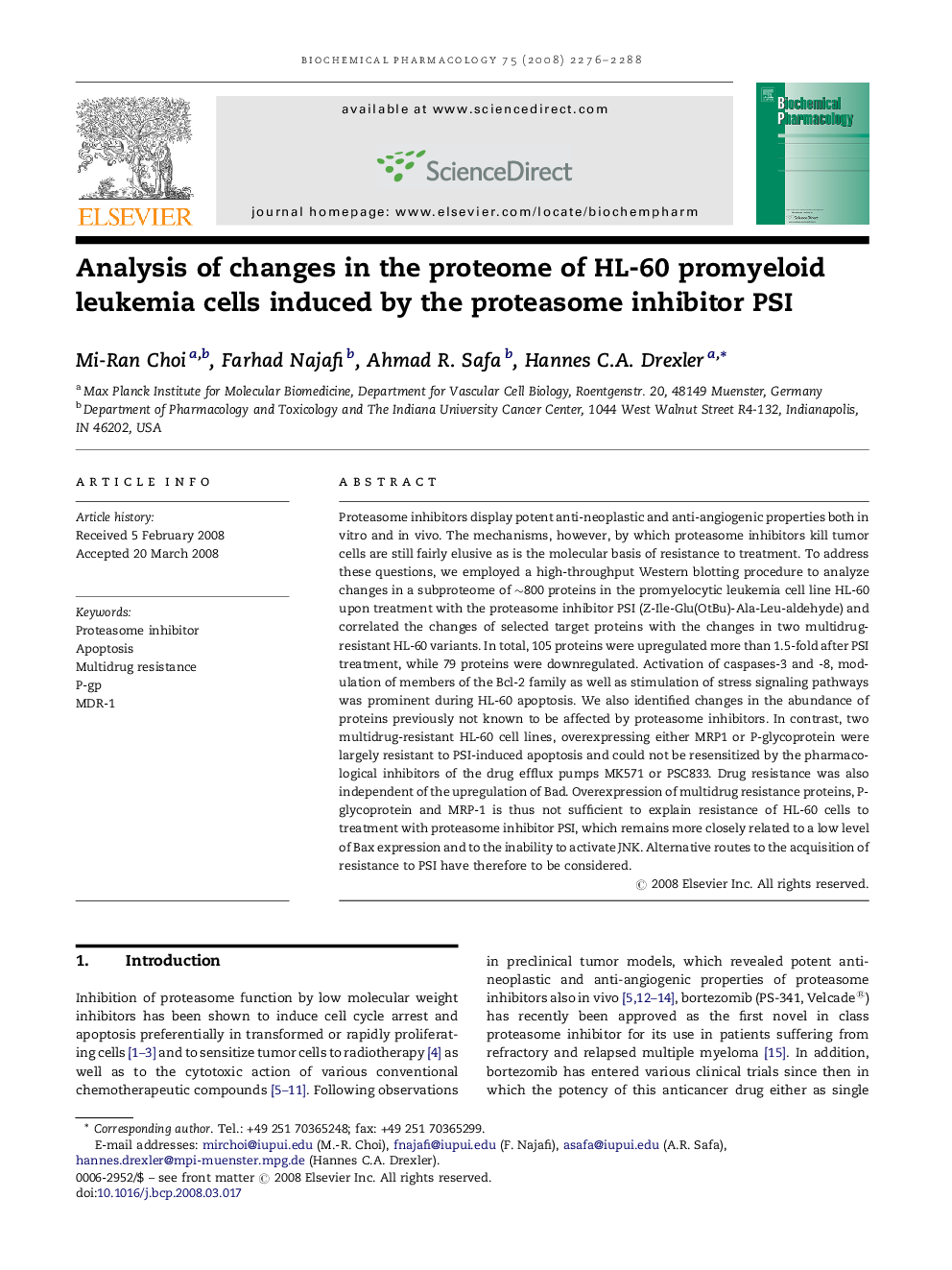| Article ID | Journal | Published Year | Pages | File Type |
|---|---|---|---|---|
| 2514220 | Biochemical Pharmacology | 2008 | 13 Pages |
Proteasome inhibitors display potent anti-neoplastic and anti-angiogenic properties both in vitro and in vivo. The mechanisms, however, by which proteasome inhibitors kill tumor cells are still fairly elusive as is the molecular basis of resistance to treatment. To address these questions, we employed a high-throughput Western blotting procedure to analyze changes in a subproteome of ∼800 proteins in the promyelocytic leukemia cell line HL-60 upon treatment with the proteasome inhibitor PSI (Z-Ile-Glu(OtBu)-Ala-Leu-aldehyde) and correlated the changes of selected target proteins with the changes in two multidrug-resistant HL-60 variants. In total, 105 proteins were upregulated more than 1.5-fold after PSI treatment, while 79 proteins were downregulated. Activation of caspases-3 and -8, modulation of members of the Bcl-2 family as well as stimulation of stress signaling pathways was prominent during HL-60 apoptosis. We also identified changes in the abundance of proteins previously not known to be affected by proteasome inhibitors. In contrast, two multidrug-resistant HL-60 cell lines, overexpressing either MRP1 or P-glycoprotein were largely resistant to PSI-induced apoptosis and could not be resensitized by the pharmacological inhibitors of the drug efflux pumps MK571 or PSC833. Drug resistance was also independent of the upregulation of Bad. Overexpression of multidrug resistance proteins, P-glycoprotein and MRP-1 is thus not sufficient to explain resistance of HL-60 cells to treatment with proteasome inhibitor PSI, which remains more closely related to a low level of Bax expression and to the inability to activate JNK. Alternative routes to the acquisition of resistance to PSI have therefore to be considered.
